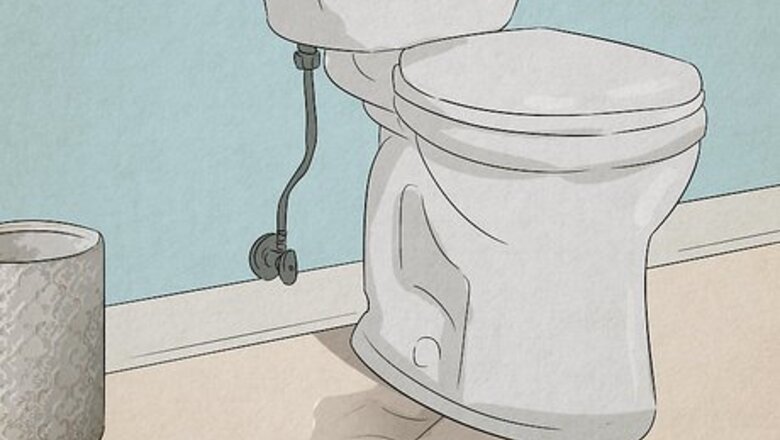
views
What’s the price range for a typical toilet leak?

Expect to pay $150-$500 USD—but likely closer to $150-$175. In the U.S., the average plumbing repair costs a bit over $300 USD, but that includes repairs that are more complex than most toilet leaks. If your repair doesn’t involve replacing the toilet, fixing water damage, or other added charges, you’re more likely to pay around $150-$175 for a leak repair done during normal business hours. Of course, there are many variables that can affect the price you’ll pay. The remainder of this article will walk you through several of those variables.
Do plumbers charge by the hour or by the job?
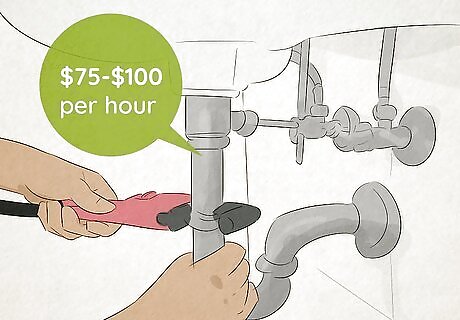
Plumbers typically charge by the job based on its complexity. This is true in the U.S. at least, but might be different elsewhere. U.S. plumbers usually charge around $75-$100 for a service call, make a quick diagnosis, then give you an estimate to do the repair job. If you agree to the repair, the service fee should be folded into your total cost. If you turn down the repair, you’re still on the hook for the service fee. While plumbers don't usually charge by the hour, you'll usually pay somewhere between $45 and $200 USD for each hour of work they do in your home.
Will the cost vary depending on where I live?
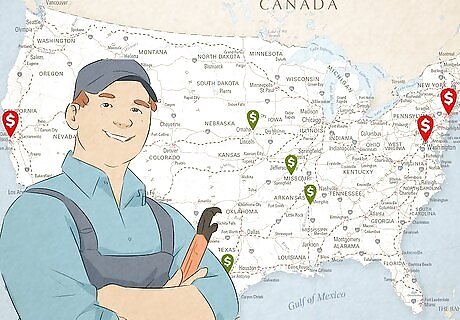
It might—plumbers usually charge more in high cost-of-living areas. If the average toilet leak repair costs around $150-$175 nationwide in the U.S., you may end up paying more like $250-$275 in a major city with a high cost of living like New York or San Francisco. To get a better idea of the likely cost where you live, visit several home repair sites (like Thumbtack or Angi), enter your postal code, and check for cost estimates.
Does the type of toilet leak affect the price?
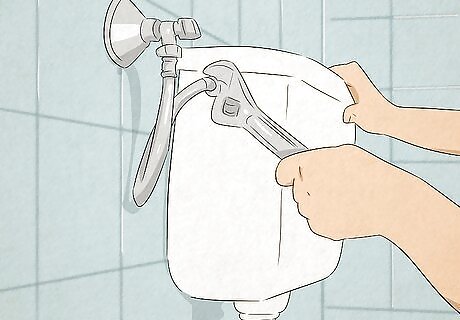
Repairs that require removal of part or all of the toilet usually cost more. Of the four most common types of toilet leaks, two (flapper and supply line) usually don’t require toilet removal to repair, while two (spud washer and toilet flange) usually do. You may end up paying around $325-$500 in the latter cases. Here’s more info on the most common types of leaks: Leaking from the tank into the bowl due to a bad flapper. If your toilet tank refills frequently in brief spurts, this is the most likely culprit. To diagnose it, add some food coloring to the water in the tank. If you see the color in the bowl 15 minutes later, the flapper isn’t sealing properly. Leaking between the tank and bowl at the spud washer. The spud washer is a rubber gasket that seals the connection between the tank and bowl. If water is dripping onto the floor from the bottom center of the tank, count on it being the spud washer. Leaking from the water supply line. Most toilets have a water supply line made of braided metal that connects to the bottom of the tank at one side. The most common leak spot is where the supply line attaches to the tank. Leaking at the base of the toilet due to the toilet flange or wax seal. Your toilet sits on a flange that secures it to the floor. If the flange is broken or its wax seal has failed, you’ll see water seeping out from under the base and onto the floor.
Does emergency service (like on a holiday) cost a lot more?

It can—you might pay 2-3 times as much for emergency service. If the leak is minor and not damaging the structure or finishes of your home, it’s worth waiting to have the repair done during normal business hours. If you have a significant leak happening, however, pay extra if necessary to get a plumber ASAP instead of risking thousands of dollars of water damage to your home. A $150 USD toilet repair call on a weekday afternoon can easily become a $350 repair on a weekend night or during a holiday. But that’s a small price to pay if you have a major leak! If you have an internal leak (from the tank to the bowl), save water by shutting off the water supply valve (located at the flexible supply line) when you’re not using the toilet. If you have a small external leak, shut off the water supply and use towels or bowls to catch the drips temporarily.
Will the cost of replacement parts add to the price?
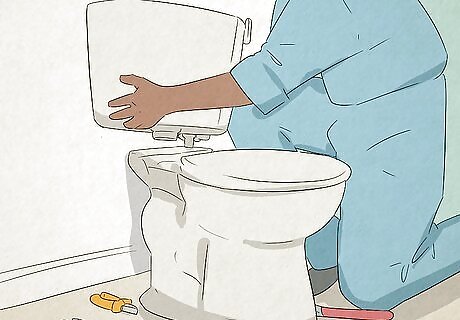
Leaks usually don’t require pricey parts—unless you need a new toilet. You can buy toilet replacement parts like flappers, wax seals, and flexible water supply lines for $20 USD or less at a hardware store, so these shouldn’t add substantially to your repair cost. However, if there’s damage to the toilet itself, replacing the entire fixture can easily add $150 USD or more to your expected bill. If the leak is coming from an area with obvious damage to the fixture itself—like a crack in the tank—expect to pay for a new toilet as part of your repair cost. It is possible to replace just the toilet tank and not the bowl if only the tank portion is damaged—but only if you can find an exact match. It’s usually easier to start fresh with a new toilet install.
What steps can I take to avoid being overcharged?

Search online for repair guides for your particular leak. Even though you’re not DIYing it, get an idea of the process and parts involved before you call a plumber. Search for your particular leak, such as “fix a toilet flange leak” or “fix a leaking toilet supply line.” Read through several results to familiarize yourself with the basics of the repair. For example, check out wikiHow articles like How to Fix a Running Toilet and How to Replace a Toilet Flapper. You may even be inspired to do the repair yourself instead of calling a plumber! Sometimes there are super easy fixes. All you need to do is turn off the water supply. Then swap a washer or attach the disconnected chain to the float.

Document the leak with photos and some written notes. Sharing this info with the plumber can help you receive a more accurate estimate, especially over the phone. It also indicates that you’ve done your homework and “know your stuff,” which can reduce any temptation the plumber might have to overcharge you.

Ask questions about the repair based on your research. A plumber may tell you that the repair is more complex (and pricey) than your research led you to expect. That may certainly be true, but don’t just take their word for it—ask questions! If they can’t give you a good explanation as to why you need a whole new toilet for a leaky spud washer, for example, call someone else. For instance: “The leak seems to be coming from the supply line’s connection with the tank. Can you give me a little more detail on why you think we need to replace the entire tank assembly?”

Contact several plumbers for estimates whenever possible. Plumbing estimates for the same repair job typically don’t vary by all that much within the same local area—unless one of the plumbers is trying to “pull a fast one” on you! So long as you’re not dealing with an emergency that requires service ASAP, aim to get at least 3 phone estimates before choosing a plumber to come to your home. For example, if you get 3 over-the-phone estimates for $125, $150, and $175 USD, there’s a really good chance that your final repair bill will fall within that range. If you get estimates of $150, $175, and $350, though, that’s a great reason to exclude the final plumber from consideration!
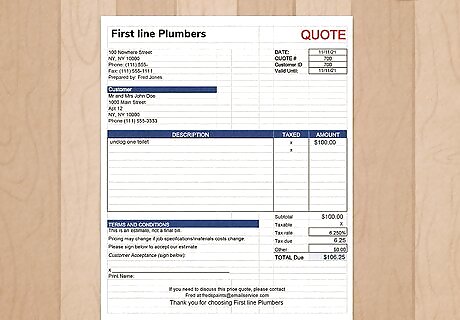
Get a detailed estimate in writing before agreeing to the repair. Don’t let a plumber start to do any work before they give you a clear written estimate. The estimate should spell out exactly what they’re going to do, what they’ll require in order to do it, and how much it will cost you. It’s vital protection against being taken advantage of by an unsavory plumber. Don’t rely on “handshake agreements” for any type of work done in your home. Get everything in writing so you have something to fall back on if disputes arise.



















Comments
0 comment